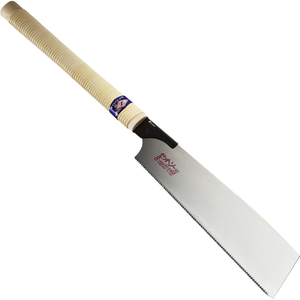There are different models of Japanese saws, we will review them but what we notice right now is that they are simply composed of a handle and a blade tooth. You can make use of the The best Japanese handsaw in 2019 and there you can come up with the best choices now. The essential choices are all there and all you will have to do is to make a choice.
What makes them stand out and makes them so effective?
Their main feature that distinguishes them from the handsaw saws we all know is that this saw cuts by pulling and not pushing. The tooting is inverted and much thinner. This gives them two major advantages: precision and cutting effort. As we will see later, cutting with Japanese saws is like cutting in butter which allows us to be much more attentive to precision.
How to use them?
You do not use a Japanese saw like a handsaw. Indeed as the cut is done by pulling, our cutting gesture must be different. We are used with our conventional saws to position ourselves above our room, position the tip of our saw down and pull the saw up. This is understandable because we want to increase the strength by pushing. The disadvantage is that if the blade is badly sharpened or if you force a bit too much, it may bend. This experience has surely happened to you already.
With Japanese saws we do the opposite. We will point the saw up, and cut by pulling down without forcing. We will let the gravity help us to make the cut and so with the blades very sharp, our cut will be super precise and clean.
We can also use the saw horizontally. It is also important for optimal use, to properly stall our room and hold the handle of the saw with both hands. We must unlearn our classic cutting action to use this saw. After a few tries you will see, it can still be learned quickly.
The different models of Japanese saws
As you read at the beginning of the article, there are different types of Japanese saws. We will see the most popular models and for what purpose.
The Japanese ryoba saw

This is the most versatile Japanese saw and if you had to pick one, I think it would be the smartest choice. It has two types of teeth on each side. The side with small regular teeth allows to cut, i.e. to cut perpendicular to the wood grain. The side with the growing prongs allows to design, so to cut in the direction of the wood.
Dozuki Japanese saw
It is an extremely precise saw, especially due to the reinforcement on the upper part. This reinforcement limits us precisely in its use, because we cannot realize deep cuts. So it is a precision tool that you think is more for professionals and may not be essential for the clever DIYers.
The Japanese kataba saw
It may be the ideal alternative to dozuki because it does not have the reinforcement on the top. It allows us to cut in depth too. Obviously we lose a little precision but it is still more accurate than our conventional saws.
